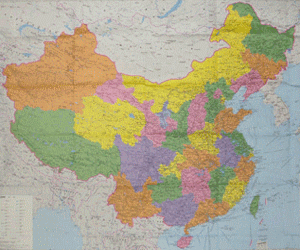|
US
environmental companies are helping SOEs clean up their
operations
By mid-2007, the Shuikoushan Non-Ferrous Metal factory in
Hunan Province faced a crisis. As part of its 11th Five-Year
Plan (2005-2010), the Chinese government was closing down
high-polluting factories–and the Shuikoushan factory was
among those at risk. The 110 year-old state-owned factory,
with a gross annual income of more than US $1 billion and
12,000 employees, was emitting high levels of heavy metals
into the local water supply. This polluted water was flowing
directly into the Xiang River and affecting the drinking
supply for millions of people within the nearby city of
Changsha. Despite several attempts to remove the heavy
metals by using conventional chemical treatment methods, the
factory continued to emit dangerous levels of pollution.
In late 2007, US-Pacific Rim International, Inc.(USPRI), a
US consulting company that assists US companies market and
sell their products and technologies in China, began to
promote the electrocoagulation (EC) water treatment system
of one of its client companies, Kaselco, to the factory.
USPRI highlighted the EC system’s unique electrochemical
process to remove heavy metals from water. Faced with the
risk of closure, the Shuikoushan factory decided to try the
product.
During a pilot test of the EC system in late 2007, the
factory found it could almost completely eliminate the heavy
metals that the factory was emitting. After three months of
further tests and negotiations, the Shuikoushan factory
decided to purchase and install the EC system.
The EC system began operating in May 2008, and the results
were dramatic. The factory was able to reduce the amount of
heavy metals it discharged by almost 99 percent, meet the
highest national water pollution emission standard and treat
4,100 tons of water a day. Deputy Director of the Hunan
Provincial Environmental Protection Bureau Xie Lishuai
inspected the EC system and praised the project as a model
for wastewater treatment. In the space of several months,
the Shuikoushan factory had gone from being a dangerous
polluter
to a socially responsible enterprise.
Even as China faces enormous environmental challenges,
success stories like Shuikoushan’s EC system reveal an
excellent opportunity for US environmental companies to
export their advanced technologies to China. American
companies can play a role in helping China address its
environmental problems.
A review of some of China’s environmental statistics
demonstrates that as China continues its rapid growth, it
also
faces significant environmental challenges. Currently, 70
percent of the country’s rivers, lakes and reservoirs are
not safe for human use, 70 percent of its energy comes from
high-polluting coal and 5,800 square miles of its grasslands
are lost to desertification every year.
As these environmental problems grow, the market for
environmental products and technologies is expected to
expand as well. The China Greentech Report 2009 estimates
that by 2013 the market for environmental technologies will
be between US $500 billion and US $1 trillion. According to
the US Foreign Commercial Service, the greatest
opportunities for US environmental companies lie in
municipal and industry wastewater treatment technology,
hazardous waste and medical waste treatment technology,
waste-to-energy technologies, de-SOx and de-NOx
technologies, as well as air and water monitoring equipment.
Investments by the Chinese and US governments on a variety
of environmental initiatives in China also offer
opportunities for US greentech companies. Of China’s US $586
billion 2008 stimulus plan, approximately 37 percent is
dedicated to greentech-related projects. China’s upcoming
12th Five-Year Plan (2011-2016) is also expected to build on
the 11th Five-Year Plan’s significant focus on the
environment.
US-Chinese government cooperation on environmental issues
has also been growing. During President Obama’s visit in
November 2009, the US and China committed to spending at
least US $150 million of public and private funding on a
US-China Clean Energy Research Center, as well as agreeing
to a host of other initiatives related to energy, coal and
shale gas.
The complexity of many environmental problems will also
require collaboration between US environmental companies.
Multiple companies may be needed to complete just one
environmental project. For example, a lake clean-up project
could require different companies to provide industrial
pre-treatment, pipes for dredging and adequate
infrastructure. Such collaboration is especially important
for small and medium-sized enterprises, when they approach
Chinese municipalities and companies they can offer
comprehensive environmental solutions. Public-private
initiatives such as the American Water Working Group,
sponsored by the Foreign Commercial Service, and the
US-China Energy Cooperation Program, based out of AmCham-China,
are promising examples of such collaboration.
Even while there are bright prospects for US environmental
companies in China, the challenges of cost, intellectual
property rights (IPR), lack of transparency in project
bidding and domestic competition must be recognized by any
greentech business that wants to export to the Chinese
market.
The advanced nature of some US technologies means their
prices can be relatively high in China, but still find a
place in the market. While the higher costs of certain US
technologies will price them out of some markets here, it
should not lead US environmental companies to give up on the
country completely. Many Chinese companies respect, and are
willing to pay a higher price for, high-quality US
technologies. In addition, while costs may be too high in
some regions of China, in more developed parts of the
country, Chinese companies and state-owned enterprises will
pay for exceptional US products. Further, companies should
consider becoming original equipment manufacturers in China
for all or part of their products in order to drive down
costs.
As with any company that wishes to export its technology to
China, US greentech companies should be particularly
concerned about IPR. Even as IPR enforcement has improved in
recent years, and even if appropriate safeguards are taken,
it is almost certain that companies will have some of their
technology copied in China. Recognizing this reality, and
treating it as part of a business strategy rather than a
legal issue, is a necessity for any US environmental company
looking to export to China. To stay ahead of IPR violations,
companies must ensure that their products remain leaders in
their field.
The lack of transparency in the bidding process for
environmental projects can also prove a challenge for US
companies. In order to address this issue, companies should
hire Chinese staff or engage local sales agents to represent
them in the bidding process. Local knowledge of Chinese
culture and business practices will enable Chinese staff to
illuminate the complex and opaque bidding process for
American companies.
Significant public and private sector investments in China’s
green industry means US environmental companies will
face growing competition from local Chinese companies.
Nonetheless, American companies can continue to offer unique
technologies in China. In order to offer the greatest value,
US environmental companies exporting to China should conduct
thorough market research, determining where the country
lacks advanced and integrated technology to meet their
greatest environmental challenges.
Exporting environmental technologies to China holds enormous
potential for small and large US companies. While selling
greentech products also presents some challenges, these
issues can be addressed by taking a realistic approach to
the Chinese business environment. By increasing US
environmental exports to China, US companies will not only
expand their market, but will also help raise China’s living
standards.
Anthony Goh is president and Matthew Sullivan serves as the
firm’s director of business development and communications
of US-Pacific Rim International, Inc.
This article was originally published in
AmCham-China
News by
www.us-pacific-rim.net
|


